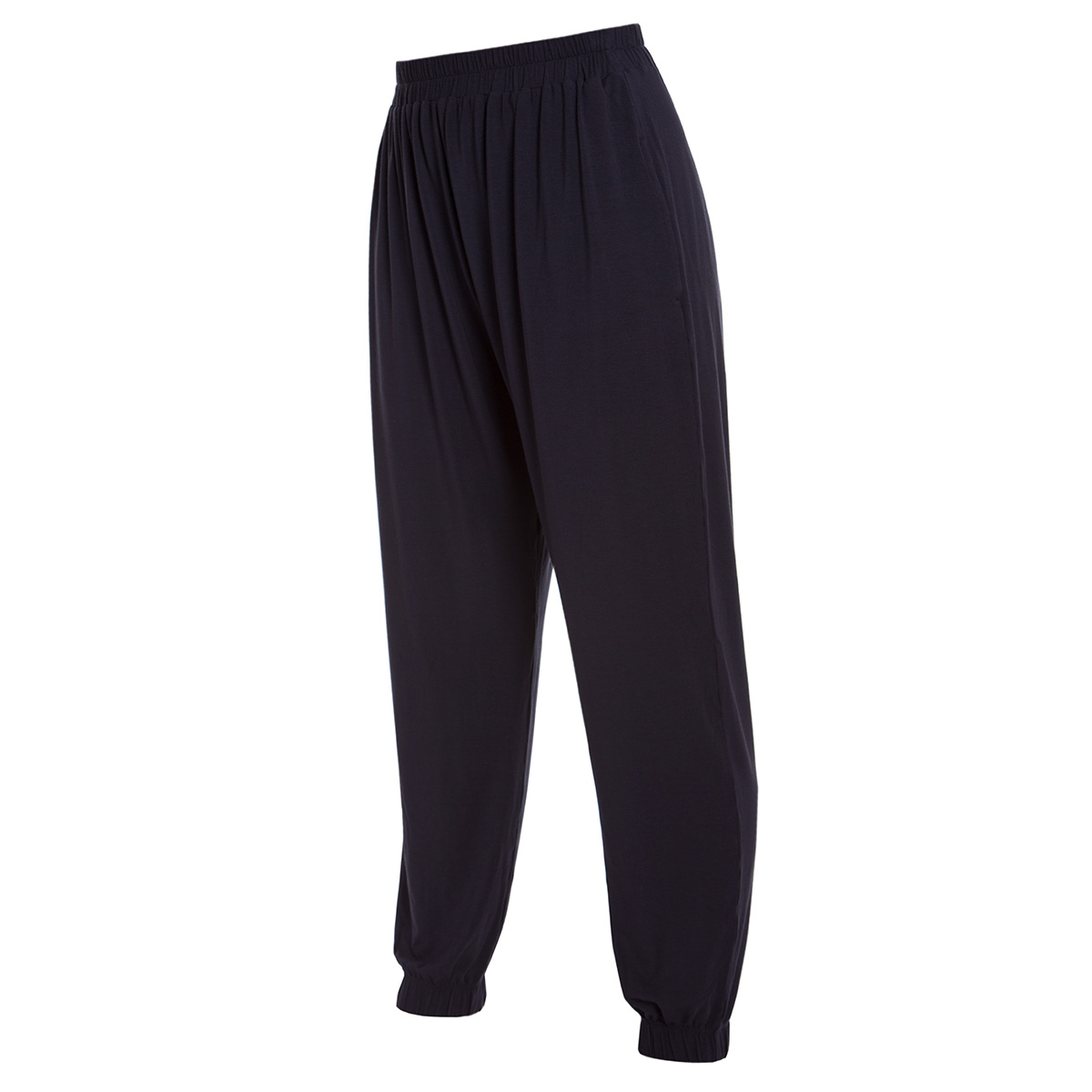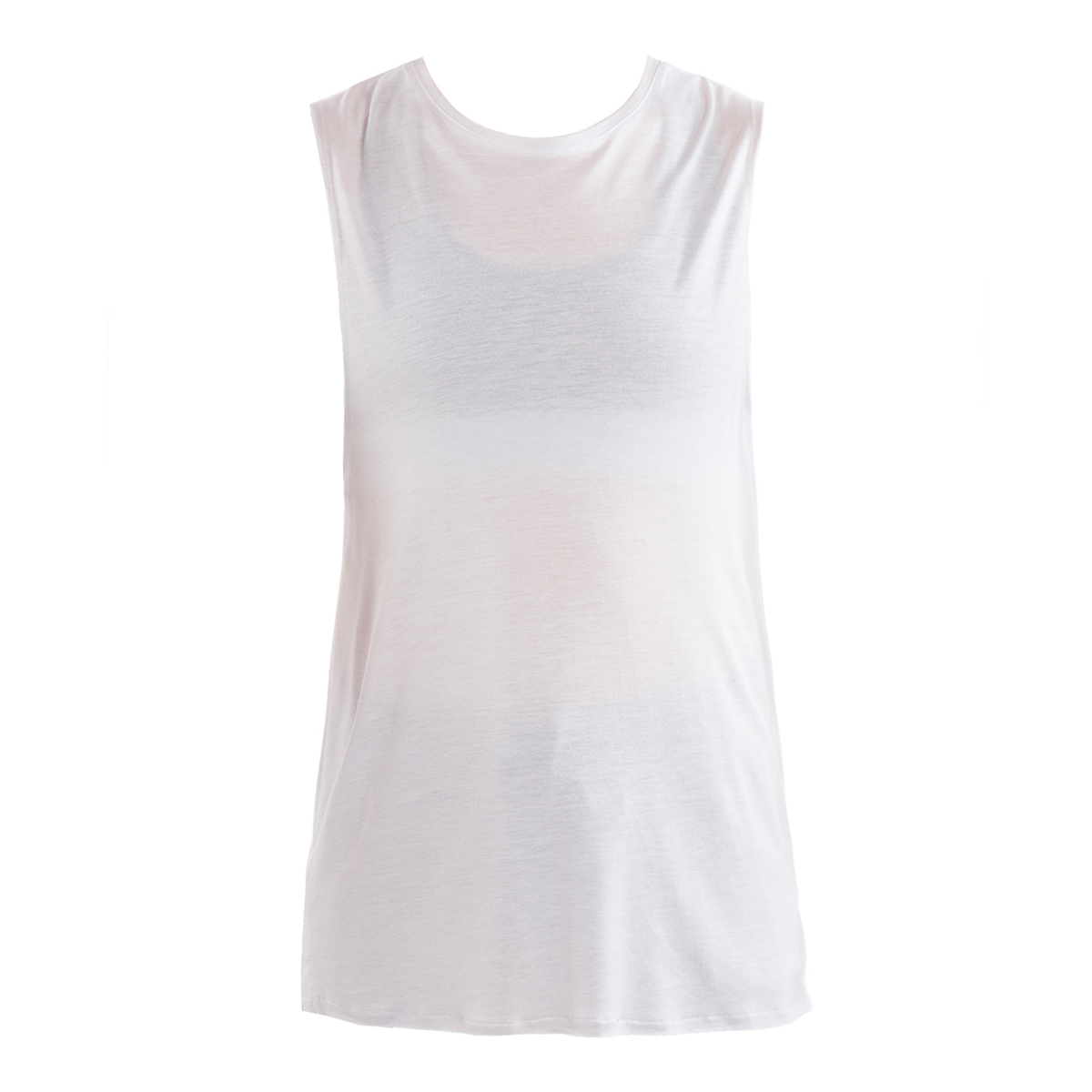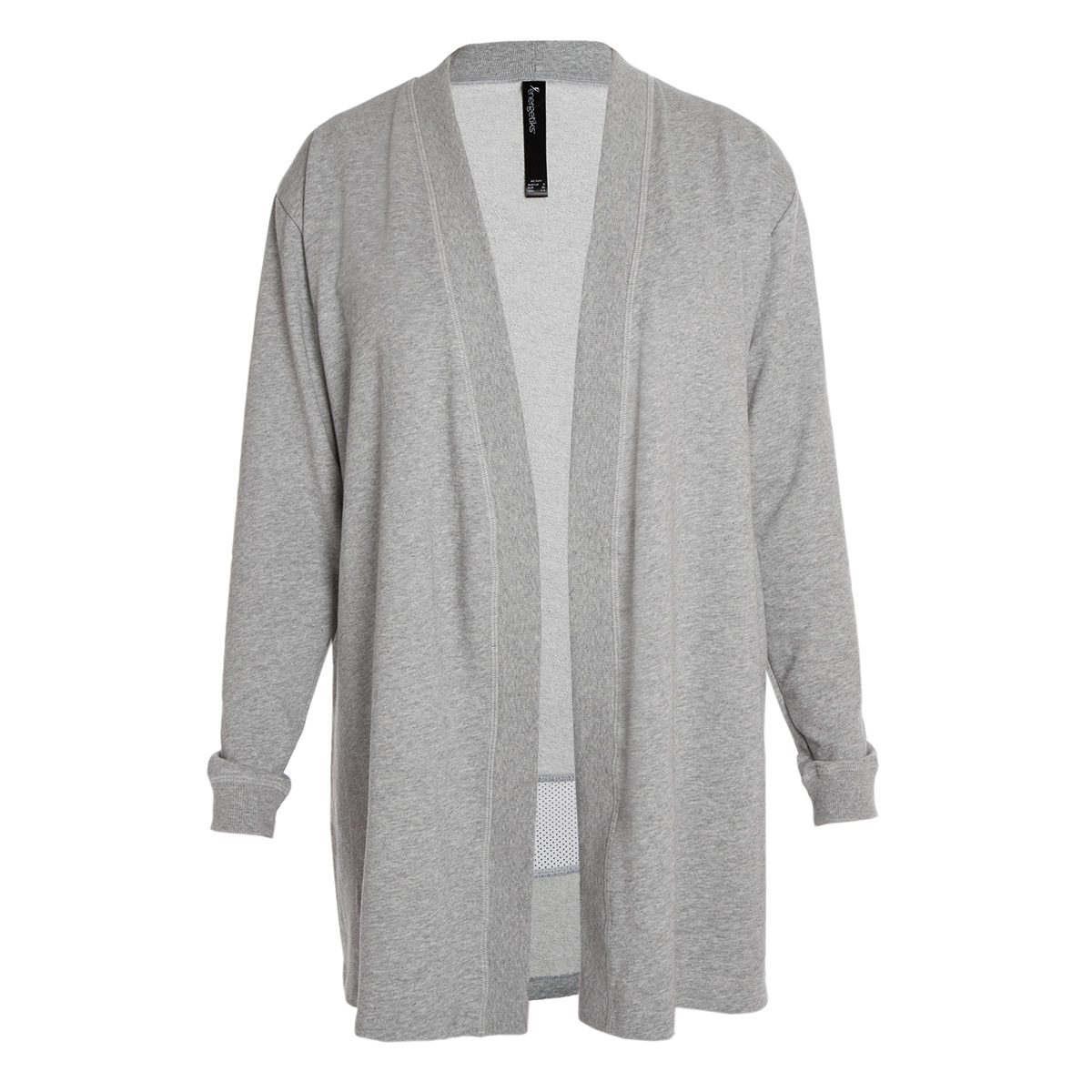Dance Stories: Artistic Director Anouk Van Dijk of Chunky Move
As Artistic Director of Melbourne based company Chunky Move since 2012, Anouk Van Dijk is a driving force in the Australian contemporary dance scene, bringing her experience of global dance cultures and influences to create works that explore and question Australian identity. Growing up in the Netherlands and continuing her professional dance career in Europe, Anouk has also developed a methodology known as 'Countertechnique' to train dancers to better understand their body and their relationship to the space around them, which is now taught worldwide. We meet Anouk at a café just outside of Chunky Move's studios to find out more about her story and her wide reaching experience with contemporary dance around the world.
From the moment we meet Anouk, we can tell why she is so respected in her field. She commands our attention, poised, incredibly articulate, warm and engaging. There is something quirky about her as well, a certain je ne sais quoi that makes you smile in her presence. We are excited to learn more about her life and we start at the beginning - with how she started to dance. "Well, I guess my first real dance experience was tap dancing," she says. "I was a tap dancer when I was eight, I was the girl with the red shoes, the smallest one. Fred Astaire, Gene Kelly, and Ginger Rogers, they were my example, you know my dream then was to be in a musical. Then I started to take jazz ballet, jazz dance, that I really loved. By the time I was 15, I was quite good in my amateur school, and my teacher invited one of his professional dancer friends from Paris – I grew up in the Netherlands – into the studio because he had choreographed a dance for his birthday," she smiles. "My teacher asked 'Do you want to come watch my amazing friend from Paris teach the routine to me?', and I said yes, that would be exciting, I’d never seen a professional dancer up close. And that changed my life," she says with certainty. "It was so amazing, the energy, the ease, the space he took in, it was like I want to be part of that universe, and I never looked back."
Anouk wears the Mikayla Slouch Pant in Cosmic, Cat Dance Tank in White and the Kora Kimono in Grey Marle,
After that day, Anouk says that she rushed home to announce to her mother that she wanted a career as a dancer. The very next day her mother phoned the local full time dance school (similar to VCASS), and Anouk auditioned and was accepted into their pre-professional training. After fast-tracking her studies, at 17, she auditioned for professional schools and chose Codarts, in Rotterdam (a famous European contemporary institution). She graduated at 19 and launched straight into her career as a dancer. "In the beginning I worked with Werkcentrum Dans which was the precursor to Rotterdam Dansgroep, and Nieuwe Dansgroep in Amsterdam, which were all repertoire companies," she explains. "It was really exciting because I performed works from Cunningham to Butoh, to more theatrical styles of dancing, to choreographing my own work; particularly with Rotterdam Dansgroep I had a lot of opportunities to do that. Then at some point I felt like OK, I’ve been doing this for eight years now, I’m ready for the next step," she says. "I was invited by Amanda Miller who had just founded Pretty Ugly Dance Company - she was the first leading dancer from William Forsythe in the Ballet Frankfurt to start her own company - to dance with her. I was dancing for a couple of years with these really amazing dancers from Forsythe, and meanwhile I started my own choreographic practice. I got funding for my first work, so I left Amanda Miller’s company to focus on my own choreography. And I’ve been doing that since then," she smiles.
In addition to her career as a performer turned choreographer, Anouk has also developed a training method known as Countertechnique, which is now practised worldwide. The thought of creating an entire technique system seems daunting to us, but Anouk is matter-of-fact about it. "It grew really organically," she says, "so it’s not like I woke up one day and thought 'Oh, I’ll make a technique, for the rest of the world, and everybody will do that'," she laughs. "But what I did notice was that for professional dancers, who were confronted with very virtuosic rehearsals, where you had to pull your body inside out and upside down, there were not really any training methodologies to prepare for it," she explains. "Ballet was not doing it any more, the old modernist forms were too rigid, too codified, too locked in, and the post-modern thinking was too soft, people just didn’t feel fit enough from it. So in that landscape, that’s where I developed Countertechnique, and also for my own body because I love dancing and I want to dance forever!" she says excitedly. She cites her two information sources as the improvisation technologies of William Forysthe and the Alexander technique, which is a holistic technique of getting a healthy relationship between your mind and your body. "It’s very psycho-physical, she explains, "and I studied a lot, so I became really aware of the space, and really aware of my body. I replaced the idea of centre with the central control mechanism, where one thing directs away from something else, and those two oppositional directions are your scaling mechanism to find freedom and control. Once I found that it was liberating, but explaining it to other people was a lot of trial and error, and out of all that questioning with my dancers and teaching worldwide in different cultures, slowly the system formed."
People come to Australia now specifically to train in Countertechnique and to become teachers. Once a year, the One Body One Career intensive takes place, now hosted at Chunky Move, and dancers fly in from all over the world to do it. They study in depth for two weeks, and when they have retained enough information they can apply for teacher training. Given that Anouk initially developed this system while working in Europe, we ask her if she has noticed any differences or similarities between the contemporary dance scene in Europe and Australia. "I think there’s crossovers," she nods, "the American schools have been very influential both here and in Europe. The more post-modernist intellectual discourse is stronger here than in Europe. Europe has formed more of its own references, there is a strong lineage from the more expressionist dance that grew out of Germany, and part of it came from Cunningham. Limón and Graham too - more as training methodologies but not so much in choreographic style - and release technique and Trisha Brown definitely influenced Europe, but not so much in the Netherlands," she adds. "Forsythe and Pina Bausch were more influential there, and they still are. Forsythe really looking into multi-faceted virtuosity of the body and the mind on the one hand, and then Pina Bausch the story telling and expression of the individual. They became really strong forces in Europe, so that’s what I would say really influenced me, and my thinking and doing. The performer is central in my work, whereas for a lot of people here in Australia, the performer is not so central, it’s more about the concept of the work or the aesthetic of the work, not so much driven by the voice of the dancer."
Anouk's works with Chunky Move are certainly focused on exploring identity and the perspective of the individual in the context of society. Her first ever work with the company after being appointed Artistic Director was An Act of Now, and by using a small glass greenhouse placed on stage of the Sidney Myer Music Bowl, Anouk explains that she showed a very iconic Melbourne landmark from a completely different perspective. "It was like I put this little capsule that I’ve landed in from the other side of the world, you know, come meet me as Artistic Director and see this world I’m bringing," she laughs. "And another work, Complexity of Belonging, was a collaboration with a famous theatre writer and director from Europe, Falk Richter, and we brought dancers and actors together on stage, so through the vulnerability and power of the body, and the complexity of how we think about everything, that merged into one performance," she says. "It became a show about belonging in an urban context. And then Depth of Field was another site specific work that I did on the forecourt here at Chunky Move, and the audience were seated with headsets on, and there were three dancers dancing for an hour, starting very far away and ending up really close by. And everywhere they danced were sensitive microphones so you could hear their breath, their footsteps, their running, it had an epic sound score, so you felt like you were in a movie, and they were dancing while the city continued, so cars, traffic, people walking their dog, getting the groceries, trucks unloading," she laughs. "By halfway through the piece, you realise that everything becomes theatre, so you’re not sure what’s part of the performance and what's not!"
There are more exciting projects coming up for Chunky Move, including Anouk's hopes to bring the company out more into Victoria. "The company has never really done that," she notes, "So we’re developing repertoire that can tour, some smaller repertoire." Also upcoming is a premiere at the end of April for new work Common Ground, which Anouk says includes "two of Australia’s most amazing mesmerising dancers, that I am very privileged to work with. We’ve turned the whole duet inside out, so it’s going to be very interesting." She also lets us in on their current work in development with visual artist Ian Strange, who is an Australian street artist in New York, who started to move into visual arts, exploring the psychology of the urban home on the outside of the home itself. "We are doing a collaboration with him and that thinking of the vulnerability of the home, and how your body is the home maybe," she explains, "and bringing that into the theatre to hopefully a big audience."
We are curious with Anouk's level of success, what her inspirations are. She is firm in her answer. "I would say the people who work in remote places and share the love for dancing, they inspire me most - it just reminds me how vital the art form is and should be. People who have to give up so much for their art, they do it deep from their gut, their heart and soul. I’ve worked with people under horrendous circumstances, like extreme cold, I have been sat in a studio with gloves and a hat on while a Chinese company were rehearsing wearing barely anything. And I said to one of the dancers, 'how do you do this - how is this possible?'. And he said to me 'I light my inner fire', and I think that’s taught me more than anything else," she says. "There’s something about our mindset and our willpower that is very resilient, and it’s in everybody, we all have it, we just have to find it. I feel very fortunate and blessed that I work in a studio where the wind is not blowing inside, and there is air conditioning when it’s hot outside. And I know a lot of dance communities don’t have that, and I have a lot of respect for those dancers."
“There’s something about our mindset and our willpower that is very resilient, and it’s in everybody, we all have it, we just have to find it. I feel very fortunate and blessed that I work in a studio where the wind is not blowing inside, and there is air conditioning when it’s hot outside. And I know a lot of dance communities don’t have that, and I have a lot of respect for those dancers.”
We are inspired just hearing Anouk talk about her experiences and we can't help but ask her for a final piece of wisdom for anyone wanting to make dance their career. "First, remember why you love it so much," she smiles. "You will forget, there is so much coming your way that is different from what you expected it to be, so remember that first seed. What was it that made you want to dance? And then I would say you can continue developing your body, your coordination and your movement endlessly. You’re never too old to start and you’re never too old to continue investigating how you can be the best dancer you can be."
For more information on Chunky Move and for tickets to upcoming performances, visit their website here.
For more information on Countertechnique, visit Anouk's site here.
Interview & Article by Emily Newton-Smith
Photographs by Elly Ford














